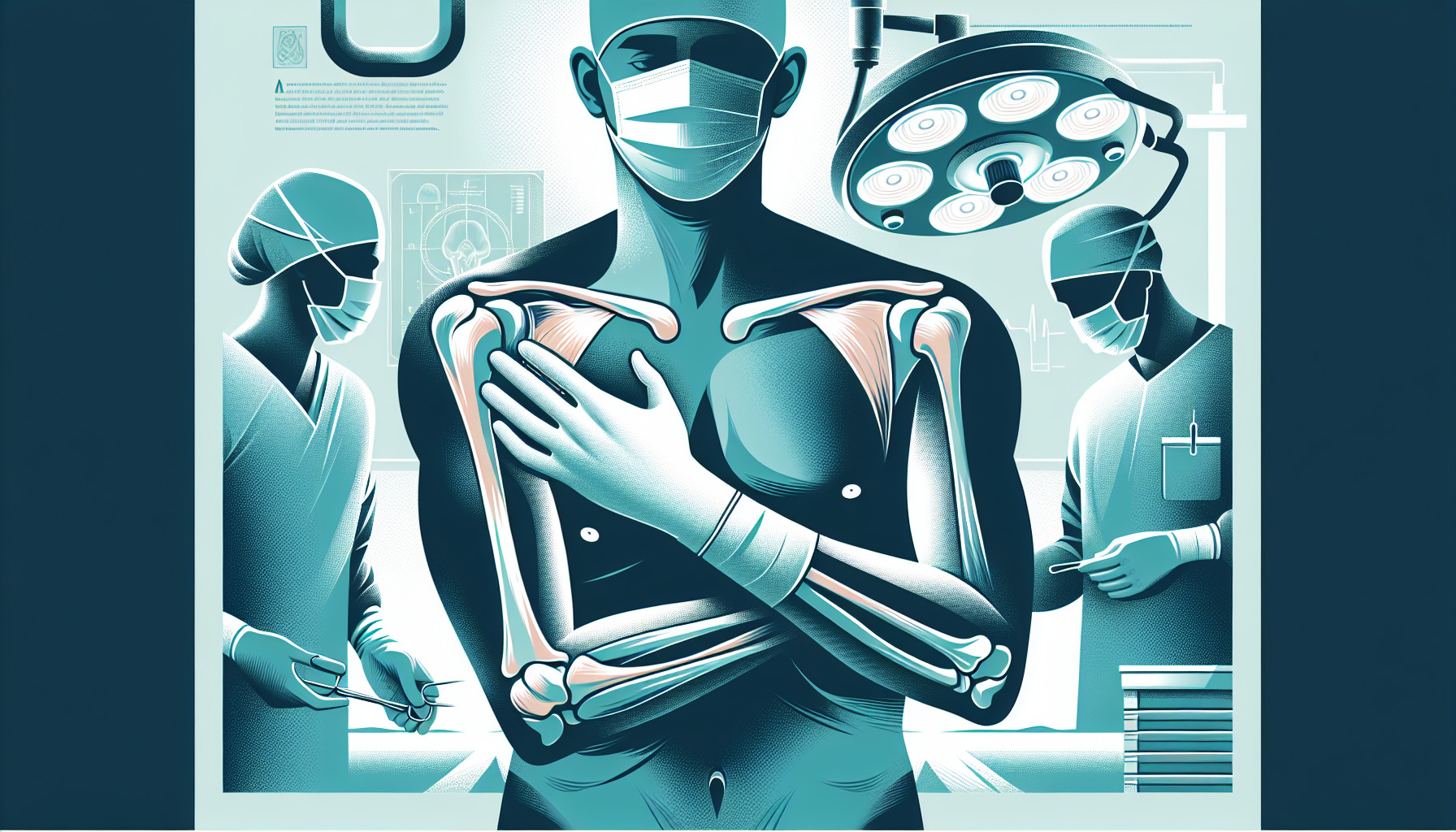Our Summary
This research paper discusses a very rare type of injury called traumatic forequarter amputations. This type of injury involves the arm, collarbone, shoulder blade, and some shoulder muscles being torn from the body. In the past, treatments for this type of injury have focused on stopping bleeding, cleaning the wound, and covering the soft tissue. The researchers of this paper describe a unique case where they were able to successfully reattach the torn body parts. Four and a half years after the procedure, the patient was able to move their elbow against gravity, lift their shoulder slightly, move their fingers a bit, and had some basic feeling. This research suggests that while this type of treatment is challenging, it can be successful.
FAQs
- What is a forequarter amputation?
- How has forequarter amputation traditionally been treated?
- What outcomes were observed in the case of successful forequarter replantation presented in the article?
Doctor’s Tip
A doctor might tell a patient undergoing shoulder replacement surgery to follow their post-operative rehabilitation plan closely, including doing prescribed exercises to strengthen the shoulder muscles and improve range of motion. This will help ensure a successful recovery and optimal functioning of the replaced shoulder.
Suitable For
Patients who may be recommended for shoulder replacement surgery include those with severe shoulder arthritis, rotator cuff tears that cannot be repaired, severe fractures of the shoulder joint, failed previous shoulder surgeries, and certain types of shoulder tumors or infections. Additionally, patients who have experienced traumatic injuries such as forequarter amputations may also be candidates for shoulder replacement if replantation is not feasible.
Timeline
Before shoulder replacement:
- Patient experiences chronic shoulder pain, stiffness, and limited range of motion
- Patient may have tried conservative treatments such as physical therapy, medication, and injections without success
- Patient undergoes imaging tests such as X-rays, MRI, or CT scans to assess the extent of damage to the shoulder joint
- Orthopedic surgeon recommends shoulder replacement surgery as a last resort option
After shoulder replacement:
- Patient undergoes pre-operative preparation including medical evaluations, blood tests, and anesthesia consultation
- Shoulder replacement surgery is performed, typically taking 2-3 hours under general anesthesia
- Patient stays in the hospital for 1-3 days for monitoring and pain management
- Physical therapy and rehabilitation begin immediately after surgery to regain strength, range of motion, and function in the shoulder
- Patient may experience temporary pain, swelling, and stiffness as they recover
- Over the following weeks and months, patient gradually improves their shoulder function and is able to return to daily activities with reduced pain and improved mobility.
What to Ask Your Doctor
- What are the potential risks and complications associated with shoulder replacement surgery?
- What is the expected recovery time and rehabilitation process after shoulder replacement surgery?
- How long can I expect the shoulder replacement to last before needing a revision surgery?
- What type of anesthesia will be used during the surgery?
- Will I need to make any lifestyle or activity modifications after the shoulder replacement?
- Are there any alternative treatments or procedures that I should consider before opting for shoulder replacement surgery?
- How experienced are you in performing shoulder replacement surgeries?
- What type of implant will be used for the shoulder replacement, and why is this the best option for me?
- How soon after the surgery can I expect to see improvements in my shoulder function and pain levels?
- What are the long-term expectations for my shoulder function and range of motion after the replacement surgery?
Reference
Authors: Sabapathy SR, Venkatramani H, Dheenadhayalan J, Bhardwaj P, Zhang D, Rajasekaran S. Journal: J Hand Surg Am. 2022 Nov;47(11):1123.e1-1123.e5. doi: 10.1016/j.jhsa.2021.07.038. Epub 2021 Sep 22. PMID: 34561134
